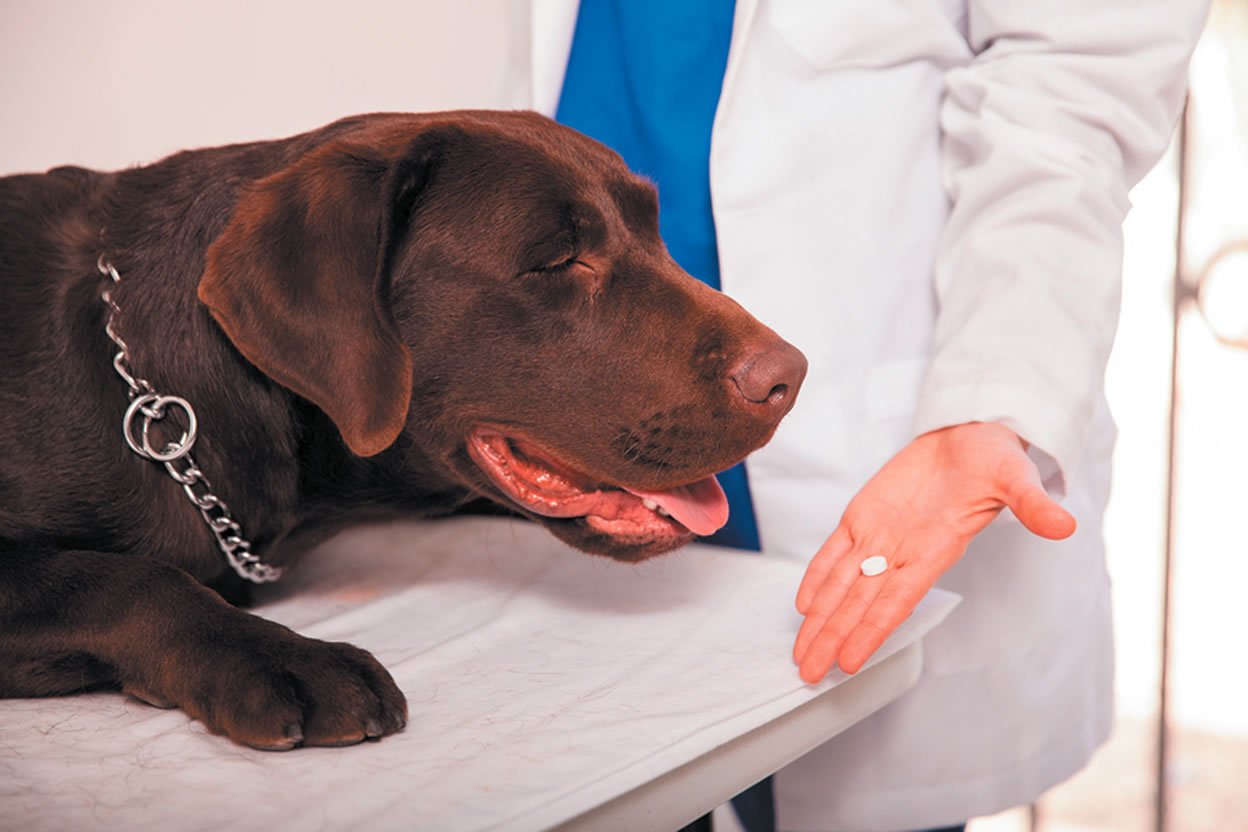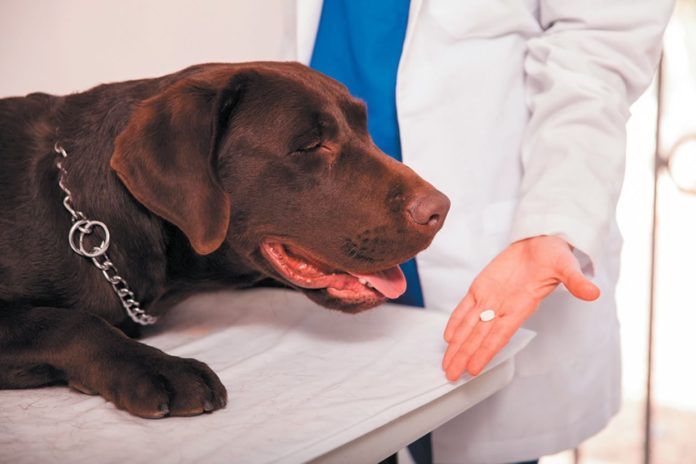
© AntonioDiaz | Bigstock
Most dogs are easy enough to get a pill into, even on a regular basis if need be. You simply make a “meatball” out of some wet dog food or something else soft, like deli meat or cheese, and your dog will end up reminding you about his medication after a while. You just have to make sure with the veterinarian that whatever food you use to wrap the pill doesn’t contain ingredients that are bad for the condition you’re treating.
Some dogs, however, “are really picky, and it can be especially hard to disguise bitter-tasting medicines,” says the head of the Tufts Animal Behavior Clinic, Stephanie Borns-Weil, DVM. Rimadyl for arthritis and other inflammatory problems is an example, as is metronidazole for various gastrointestinal problems. “If the pill is cut,” Dr. Borns-Weil says, the rough edge of the tablet releases particles of unappealing, metallic material for the dog to taste or smell.
What you don’t ever want to do to solve the problem, the doctor says, is pry your dog’s mouth open against his will. “You fray the bond if you resort to the jaws-of-life approach,” she says. “Sometimes you might have to do it in an emergency situation, but the more you can set up your animal for success using his own will, the better.”
Here are some tricks of the trade to let your dog do just that.
Tips for easier pill dispensing
Use a pill pocket. Specially designed treats that you can buy at the store, pill pockets have little pouches that you can slide a pill or capsule right into. No muss, no fuss. If a pill has been cut and has a jagged edge that your dog doesn’t like, Dr. Borns-Weil recommends coating the side that has been cut with a small dab of butter before depositing it in the pill pocket to “lock in” the molecules causing the bitter taste.
Play a shell game. Set up three tiny balls of food — cheese, meat, what have you. Two are empty and one hides the pill. First, give a blank, Dr. Borns-Weil says. “That creates trust.” Then offer the one with the pill inside it, and follow that up immediately with the other blank, which you should keep right near the dog’s nose while giving the food that contains the pill. “They’ll learn to eat the second one because they don’t want to miss out on the last one, which doesn’t contain any medicine,” the doctor points out. “It means they know exactly how the shell game works, but they buy into it because the presence of that last treat keeps them excited.”
Use a compounding pharmacy to get the medicine into liquid form instead of a pill. Human compounding pharmacies will often compound pet medicines, too. They can sometimes take the active ingredients in a pill and mix them into a liquid that has the flavor of beef or chicken. Then you just pour it over the dog’s food.
Acclimate your pet to a pill gun. Kind of like a little plunger, a pill gun will send the medicine to the back of your dog’s mouth. You can teach your pet to accept food treats this way when he’s not sick. Then, if he ever needs a pill, he will be used to the sensation, and you can use the plunger — followed up immediately with a shot of a tasty treat.
Ask your vet about long-lasting topical medicines. In some cases, it’s possible to administer the medicine once and then not have to worry about pilling your dog once or twice a day or getting some other kind of medicine into your pet. For instance, there are topical ear medicines for dogs with ear infections so painful they can’t bear to have their ears manipulated and then wiped out. The dog will hide — or become aggressive. But a vet might be able to administer a sustained-release drug just once, and then it releases its active ingredient little by little over the course of a couple of weeks and takes care of the problem.
See if the medicine can be injected. Veterinarians will often prescribe pills because they’re the least expensive form of a medicine, but if you say your dog hates taking pills, she may be able to prescribe the drug in injectable form. Many dogs will take a shot much better than they will take a pill — and the shot may have to be given just once. There are transdermal forms of some medicines, too — you just stick it on the thin part of a dog’s ear, and it will enter the body.





